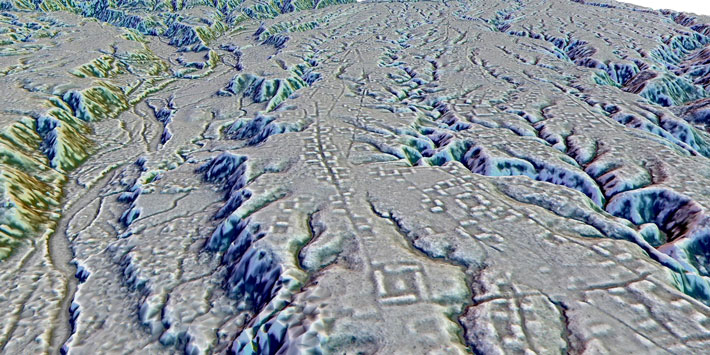 QUITO, ECUADOR—According to a Science Magazine report, a lidar survey of the jungles of Ecuador’s Upano Valley has mapped a network of interconnected cities dated to at least 2,500 years ago. Stéphen Rostain of the French National Center for Scientific Research and his colleagues had been excavating mounds from the ancient settlements of Sangay and Kilamope for decades, but they wanted a complete overview of the region. Using the lidar data, they identified five additional large settlements, and 10 smaller ones in the Upano Valley. All of these densely packed sites had residential and ceremonial structures. The survey also spotted agricultural fields and hillside terraces where corn, manioc, and sweet potato were grown; wide, straight roads that connected the cities; and smaller streets that connected neighborhoods within each city. The presence of the roads suggests that these cities all existed at the same time, some 1,000 years earlier than other known complex Amazonian societies, Rostain added. “We’re talking about urbanism,” explained team member Fernando Mejía of Pontifical Catholic University of Ecuador. For more on ancient Ecuador, go to "Ancient Amazonian Chocolatiers."
QUITO, ECUADOR—According to a Science Magazine report, a lidar survey of the jungles of Ecuador’s Upano Valley has mapped a network of interconnected cities dated to at least 2,500 years ago. Stéphen Rostain of the French National Center for Scientific Research and his colleagues had been excavating mounds from the ancient settlements of Sangay and Kilamope for decades, but they wanted a complete overview of the region. Using the lidar data, they identified five additional large settlements, and 10 smaller ones in the Upano Valley. All of these densely packed sites had residential and ceremonial structures. The survey also spotted agricultural fields and hillside terraces where corn, manioc, and sweet potato were grown; wide, straight roads that connected the cities; and smaller streets that connected neighborhoods within each city. The presence of the roads suggests that these cities all existed at the same time, some 1,000 years earlier than other known complex Amazonian societies, Rostain added. “We’re talking about urbanism,” explained team member Fernando Mejía of Pontifical Catholic University of Ecuador. For more on ancient Ecuador, go to "Ancient Amazonian Chocolatiers."
Network of Ancient Amazonian Cities Identified in Ecuador
